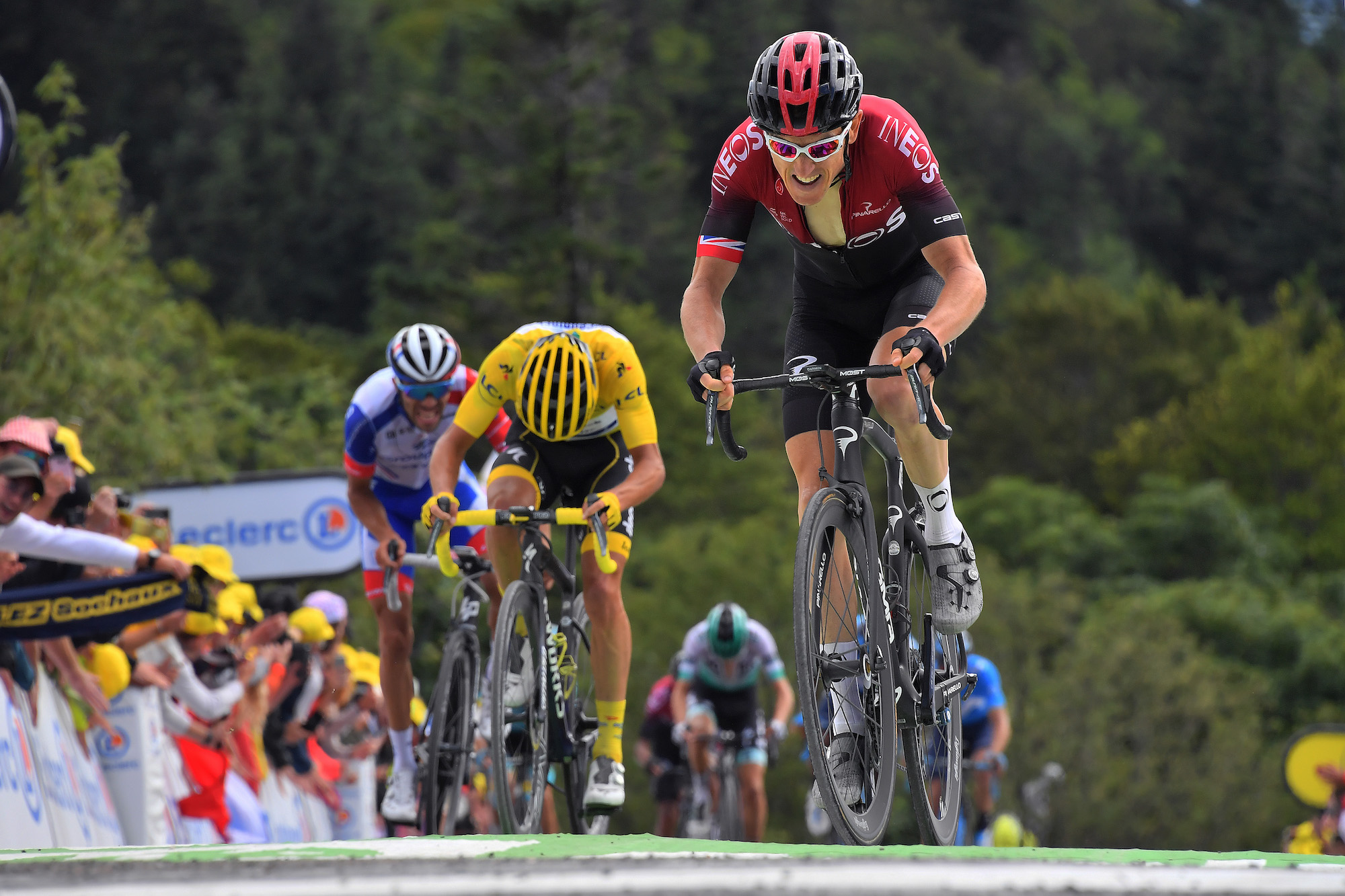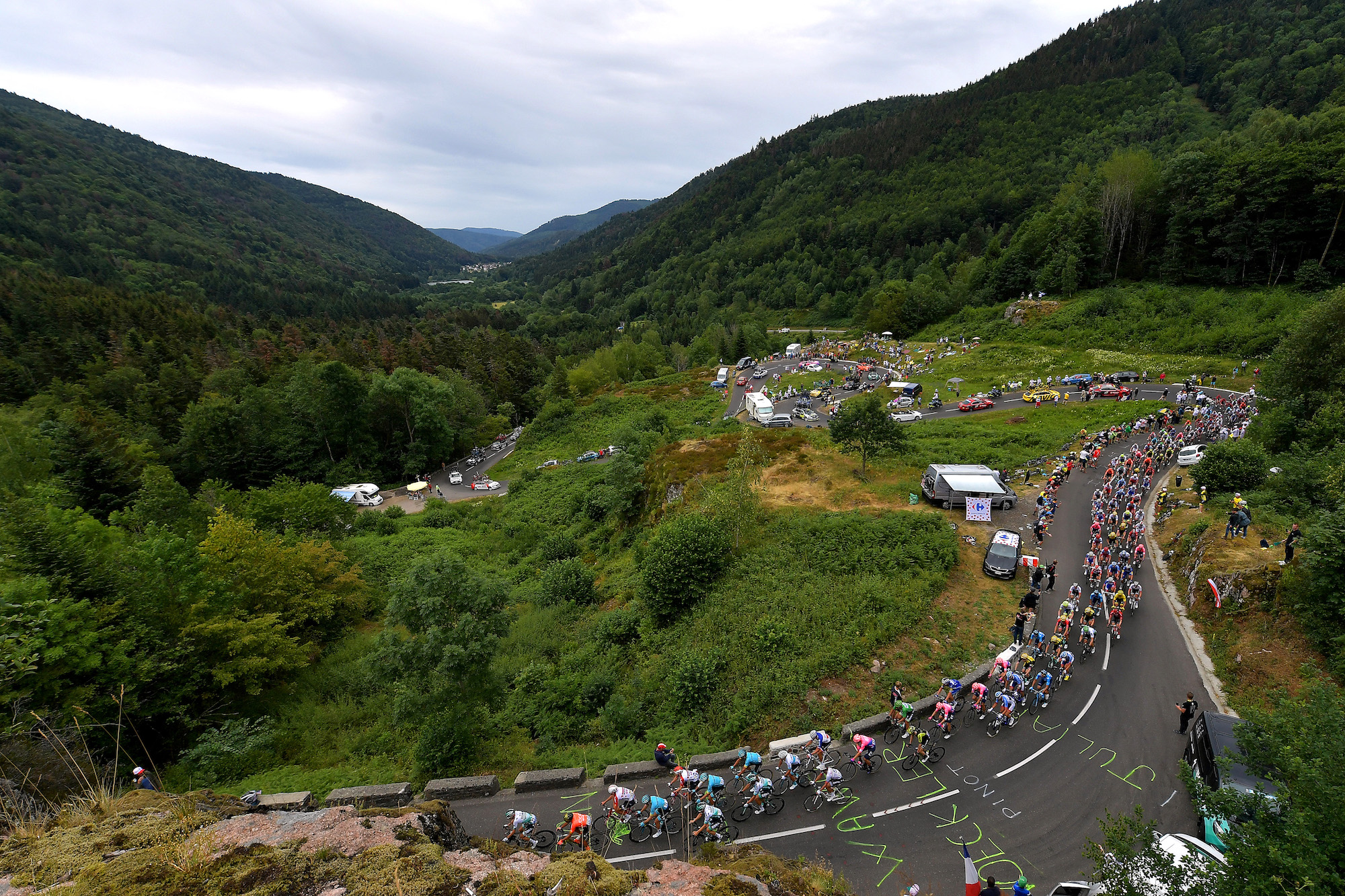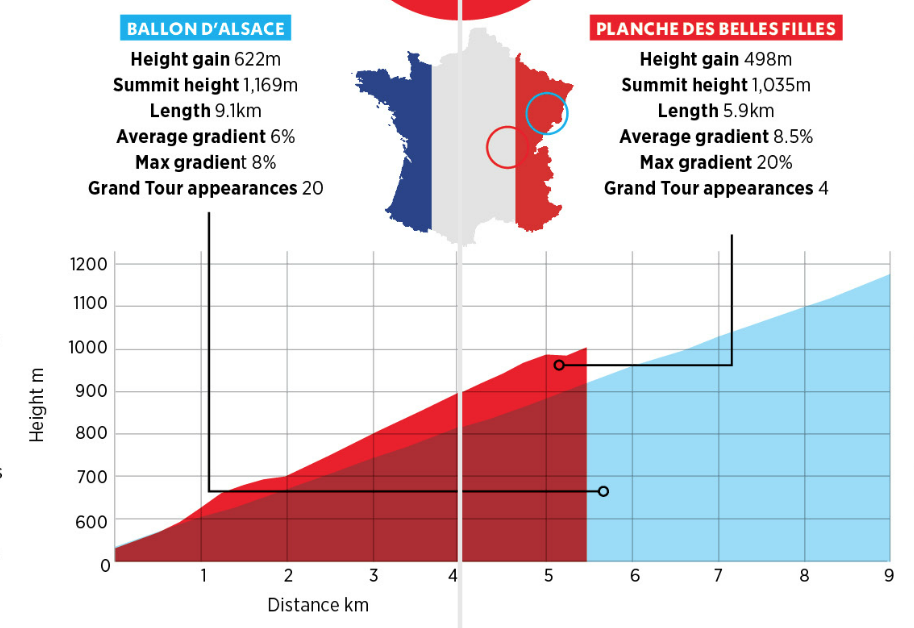Skirmish in the Vosges: Balloon d'Alsace vs Planche des Belles Filles
We pitch the original mountain summit against the new classic on the block, it’s the Ballon d’Alsace against La Planche des Belles Filles

Geraint Thomas on La Planche des Belles Filles at the 2019 Tour de France (Photo by Bernard Papon-Pool/Getty Images)

Ballon d’Alsace
Back in 1905, before the Tour de France had ventured across the high passes of the Pyrenees and Alps, and in its third running, its mastermind Henri Desgrange chose the Ballon d’Alsace in the Vosges as the first genuine mountain of the race.
Until this point, its highest peak had been the Col de la République, but this new climb, although only slightly higher, was significantly steeper, which led Desgrange to declare that no rider would be able to cross it without walking.
Big words, and strange you might think for someone organising a bicycle race. Naturally, he was proved wrong, and the first man to the summit that day (without putting a foot down) was René Pottier.
For the next nine years, the Ballon d’Alsace featured but as Desgrange found steeper, longer passes in the high mountains further south, it fell out of favour, only being included another 10 times to date. The classic route to the summit is from Saint-Maurice-sur-Moselle via nine kilometres of climbing joy, packed with switchbacks on a steady six to seven per cent gradient.

Having hosted four stage finishes in the 60s and 70s, it was granted another rare appearance in 2005 to mark the centenary of its first inclusion. The most recent visit was last year, where, along with a whole host of famous Vosges climbs, it merely played a bit part in the stage on the run up to the finale on one of the Tour’s new stars, La Planche des Belles Filles.
>>> Subscriptions deals for Cycling Weekly magazine
Get The Leadout Newsletter
The latest race content, interviews, features, reviews and expert buying guides, direct to your inbox!
Planche des Belles Filles
A few years ago, following the trend set by the organisers of the Vuelta and the Giro, the Tour de France started to look past the more traditional climbs to search out some new, slightly crazy and certainly more savage ascents, which led them here.
At less than six kilometres long, the Planche des Belles Filles is no monster but, with many kilometres of double-digit gradient, and its vicious 20 per cent ramp to the summit, it has in eight short years become a classic, especially to British cycling fans. It was on this climb, on its first inclusion in 2012, that we began to believe in something we never thought possible – that there could be a British winner of the race.

Taking the stage that day and cementing his place at cycling’s top table was future star Chris Froome, but it was Bradley Wiggins crossing the line in third, on top of a mountain and taking the yellow jersey, that had us all screaming with excitement.
>>> Cycling Weekly is available on your Smart phone, tablet and desktop
It returned promptly in 2014 when Vincenzo Nibali won and then in 2017 when Fabio Aru took the victory.
Not content with the madness of the slope to the finish, and in the true spirit of Desgrange, the organisers turned the screw a little further in 2019 by adding a kilometre of gravel at the top, which in places was as steep as 24 per cent.
Verdict
Regardless of history, the winner must be La Planche des Belles Filles for the spectacle it offers the fans both at the roadside and on screen.
This feature originally appeared in the print edition of Cycling Weekly, on sale in newsagents and supermarkets, priced £3.25.

Thank you for reading 20 articles this month* Join now for unlimited access
Enjoy your first month for just £1 / $1 / €1
*Read 5 free articles per month without a subscription

Join now for unlimited access
Try first month for just £1 / $1 / €1
Simon has been riding for over 30 years and has a long connection with Cycling Weekly, he was once a designer on the magazine and has been a regular contributor for many years. Arguably, though, he is best known as the author of Cycling Climbs series of books. Staring with 100 Greatest Cycling Climbs in 2010, Simon has set out to chronicle and, of course, ride the toughest cycling climbs across the UK and Europe. Since that first book, he's added 11 more, as well Ride Britain which showcases 40 inspirational road cycling routes. Based in Sheffield, Yorkshire, Simon continues to keep riding his bike uphill and guides rides, hosts events and gives talks on climbing hills on bikes!
-
 'I'll take a top 10, that's alright in the end' - Fred Wright finishes best of British at Paris-Roubaix
'I'll take a top 10, that's alright in the end' - Fred Wright finishes best of British at Paris-RoubaixBahrain-Victorious rider came back from a mechanical on the Arenberg to place ninth
By Adam Becket Published
-
 'This is the furthest ride I've actually ever done' - Matthew Brennan lights up Paris-Roubaix at 19 years old
'This is the furthest ride I've actually ever done' - Matthew Brennan lights up Paris-Roubaix at 19 years oldThe day's youngest rider reflects on 'killer' Monument debut
By Tom Davidson Published